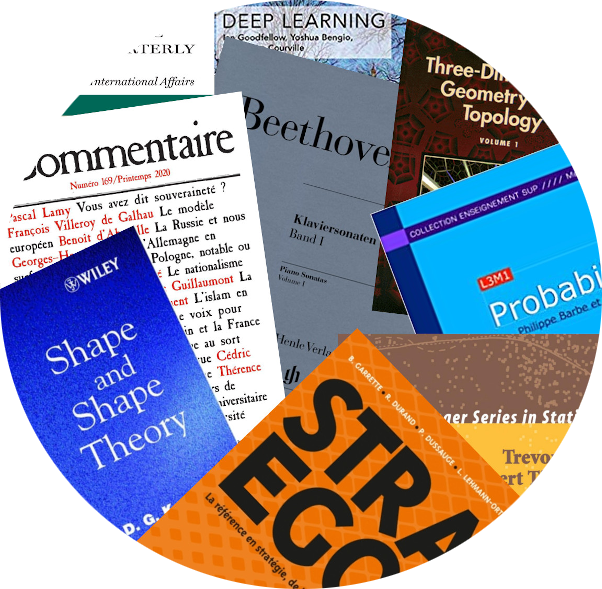 Philippe Barbe
Philippe Barbe

|
Audience segmentation and consolidationby Philippe Barbe
30 Dec 2020
|
Part 8 of 20 in a series examining the interplay of Data Science, AI, the media and advertising.
We’ve seen (parts 5, 6, 7) how fragmentation and segmentation of the media allowed fragmentation and segmentation of audiences, something advertisers welcomed in their quest to maximize advertising dollars looking to more precisely target their spending.
But all this fragmentation and segmentation came with costs that are at the heart of the business problems encountered by the traditional media industry.
Response to Diminishing ROI
From an advertiser’s perspective, as media outlets became more and more specialized, they catered to smaller and smaller groups which minimized the “waste” portion of advertising dollars spent on each specific outlet an advertiser chooses. But it made reaching all the prospects much more complicated as many more outlets need to be utilized.
On the media side, this specialization, and consequent smaller audience, eroded profitability per outlet. With very few exceptions, chasing a more or less fixed total audience implies that each outlet will see its audience shrink as the number of outlets multiplies. Like all businesses, to remain profitable their choices are increase revenues and/or reduce costs.
To increase revenue the traditional media industry made some efforts (which were bound to fail) to increase audience but in the end lost to the tech companies because:
-
As mobile technology became more prevalent, the audience shifted with the technology. Traditional media were slow to understand the change and move to a truly digital experience. Online editions of many newspapers still don’t offer a fundamentally different experience than their printed one.
-
Lacking the necessary infrastructure, traditional media outlets could not migrate effectively to the internet beyond posting copies of printed articles. By the time they did, the digital advertising market was already controlled by the tech companies leaving traditional media companies fighting an uphill battle to wrest back some of their digital advertising revenue.
Efforts to increase revenue via price increases, for instance by raising the price of air time on television, largely failed because advertisers have the upper hand as they can substitute one media outlet for another when planning a campaign.
On the cost reduction side, those were achieved via the technological evolution we discussed in previous articles, massively shrinking their work force, and consolidation of support functions.
Between 2008 and 2019, overall newsroom employment in the US declined by 23%. For newspapers specifically it was almost a 50% reduction…from 71,000 down to 38,000. The nature of employment also changed as outlets shifted to more freelancer and “user-generated” content to cut costs.
The newspaper industry lead the way in consolidation with ownership concentrating in fewer and fewer hands:
- 1953: 1,300 of the 1,785 daily newspapers in the U.S. were family-owned and -operated
- 1980: approx. 700 independent newspapers
- 1988: 12 large public companies dominated the industry
- 2016: 5 investment entities owned 900 daily and weekly newspapers, and the top 5 newspaper owners own more than 75% of all daily newspapers.
And as we see from these numbers, the nature of ownership changed, from family, to media company, to investment companies, each time bringing different business objectives.
For television and radio, in 2017, the top 5 broadcasters operated about 40% of all commercial broadcast TV stations and 60% of those operated by corporations while the top 5 radio broadcasters operated 60% of all radio stations
While this concentration does raises legitimate issues on pluralism and the role of the media in a democracy, it is fundamentally an economic phenomenon. The concentration is the inevitable result of the combination of the significance of the media which keeps it afloat, and the diminishing return of each outlet which requires consolidation to remain economically viable.
Decentralized management
Historically, an advertiser (or their ad agency or other intermediary) contacted whatever media outlet they felt would reach their audience best … newspaper, radio, or television station to negotiate the placement and price of their ads. For brands looking to advertise nationally, that meant contacting several hundreds of possible media outlets… a daunting task that resulted in the implementation of business processes involving lots of people in big advertising agencies and so-called rep firms. Those business processes are still largely in place to this day, and this is one of the reasons why the industry became so inefficient and expensive.
Also, historically, broadcast stations and newspapers (even if owned by a large group) were managed independently to account for the local specificities of their markets and to maintain close relationships with their local advertisers as each tried to optimize its own revenues.
Revenue optimization in the media industry is a complex process at which humans excel but at which computer software and algorithm designers have been failing, primarily because it involves highly complex optimizations based on highly complex information. And, because the approach of software makers has been “do it all or do nothing”.
A media sales manager needs to consider many factors including:
-
With ad campaigns typically run over multiple weeks or months, and planned months in advance, what is my expectation to fill my available ad slots 6 months from now?
-
Is this brand a good customer? Should I give them a discount to keep their business?
-
Where are my competitors in the market? That question is a particularly tricky one because there are laws against collusion.
-
How do I manage my inventory in the political cycle, given that political ad pricing is regulated, not preemptable, and that the air time it will take depends on many factors, including, in the case of run off, the result of an election to come afterwards?
Humans are very good at processing these types of complex information and questions and making decisions in the face of an incredible level of uncertainty, machines are not.
Attempting to automatize the incredibly complex decision process that a media sales manager goes through is a daunting task. Through countless hours of discussions with the most savvy, experienced managers who consistently exceeded their revenue goals I learned how complex their thought processes are and impossible they are to reproduce.
That is not to say that nothing can be done to help with the process! The solution lies not in replicating what they do, but to alleviate their task, having machines help them to do the boring parts while leaving them the high stake negotiations that requires their sound expert opinion and years of experience.
Some new processes
Increased media concentration has yield some new ideas and has allowed media companies to share content across their outlets.
Some integrated media groups have tried integrating their print, radio, and television newsrooms but these experiments largely fail due to the “culture” differences between these media (which really is just a failure of leadership and vision).
Some newspapers also built partnerships with other newspapers across the globe.
As transacting with a myriad of television became more and more costly, the alternative to buying local media through cable networks and their affiliate local stations developed.
In the broadcast world, it is now possible to buy so-called unwired network: for instance, an advertiser can buy air time on all 190+ stations owned by the Sinclair group, regardless their individual network affiliations. Similar possibilities exist in print and radio.
While these are all beneficial to advertisers, none of these is a panacea for them. In order to ensure the proper coverage, there is still need to buy from variously owned stations on multiple markets.
From a Data Science perspective, there is currently no good product that optimizes buys across markets, stations, station groups and demographic segments.
Opportunity for data science
Media concentration offers several opportunities for the application of Data Science through the possibility of data centralization and standardization and because these large organizations can afford better Data science capabilities, internally or via vendors.
On the data standardization front, some standards such as the TV Interface Practice (TIP) in the television industry have been proposed, with mixed success because the interests of media groups, advertisement agencies, advertisers, supporting companies (such as those building traffic systems to manage the programming) are not aligned.
Each of the parties want to be the one who will succeed in the digital transformation of media with the mindset of the winner takes all, but none can do it alone, because the solution lies in everyone sharing a large amount of information.
The other aspect is that the media business is fundamentally driven by advertisers and agencies: media outlets need every bit of advertising, while advertisers can, to some extent, substitute outlets. The reality is that campaign planning is all about finding the best combination, and therefore allowing substitutions.
By contrast, media outlets are receiving offers that they can accept or decline but cannot initiate.
It is therefore likely that automation will come from a company which will be able to build a top-notch Data Science capability, sits in a neutral position, helps advertisers, publishers, and content producers.